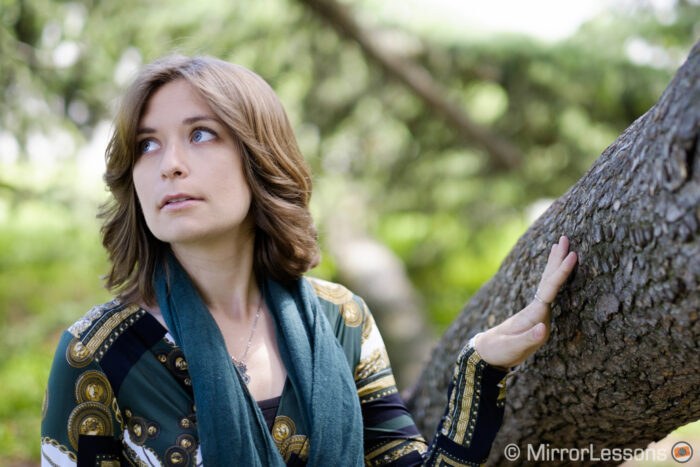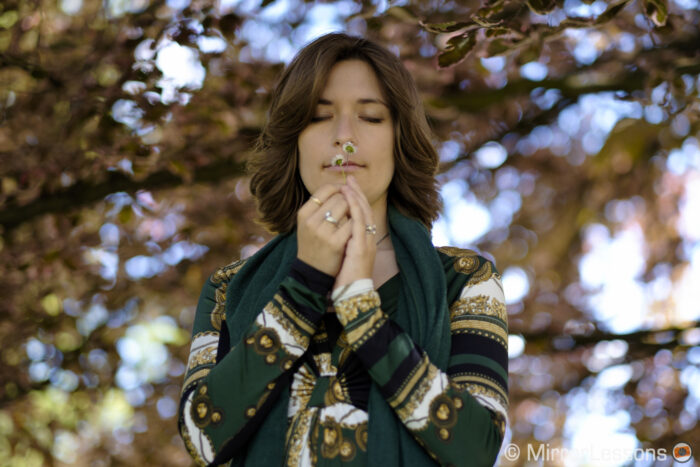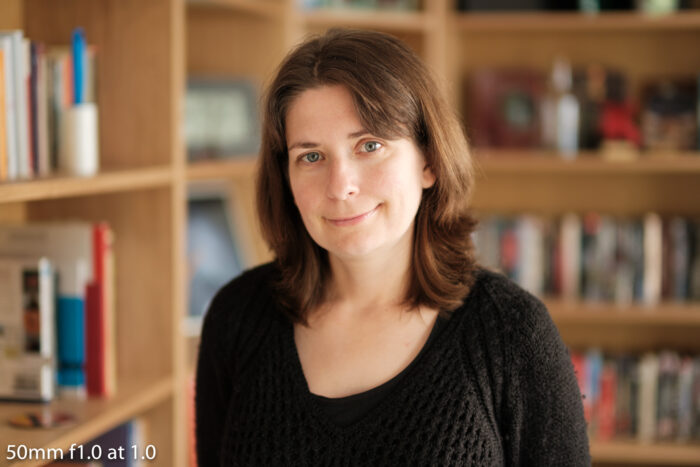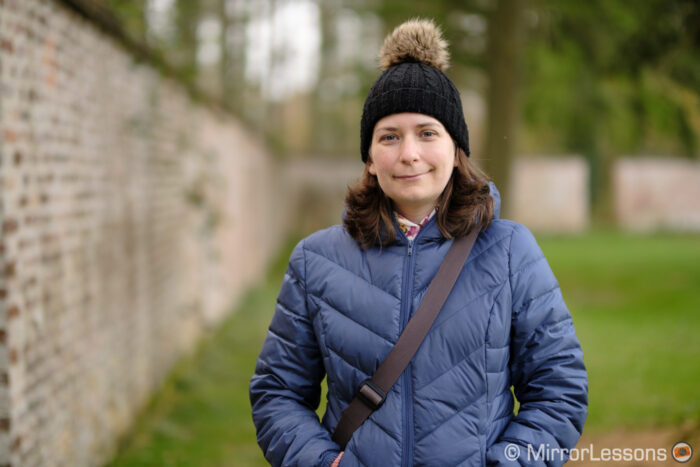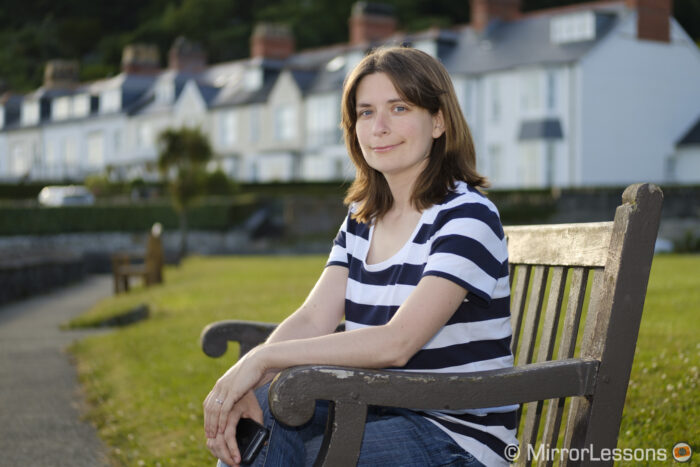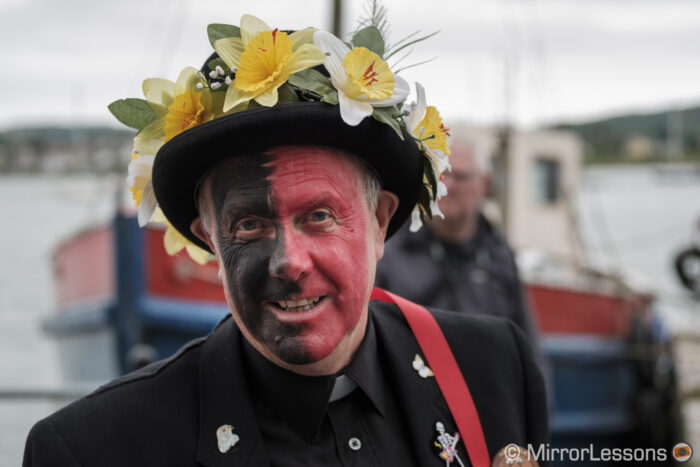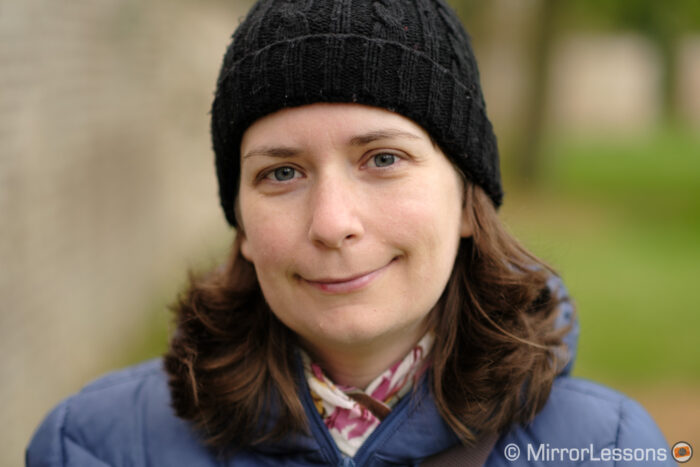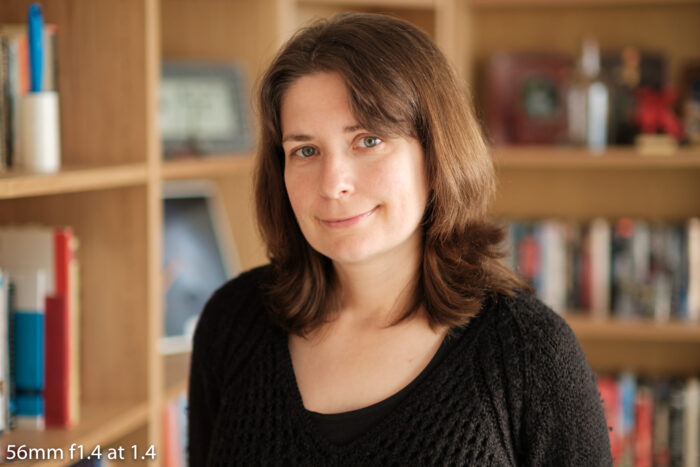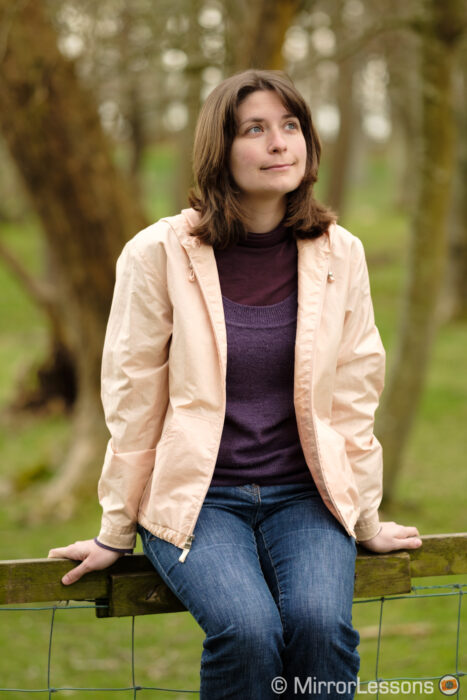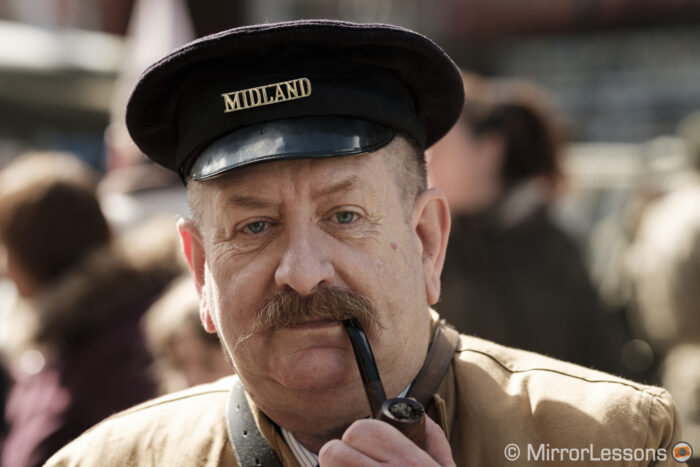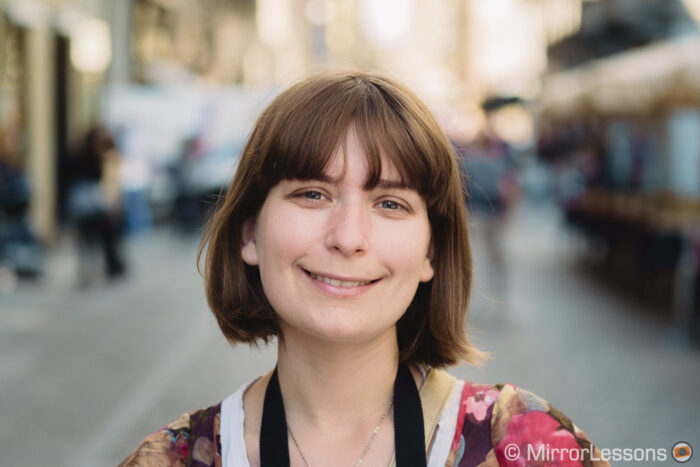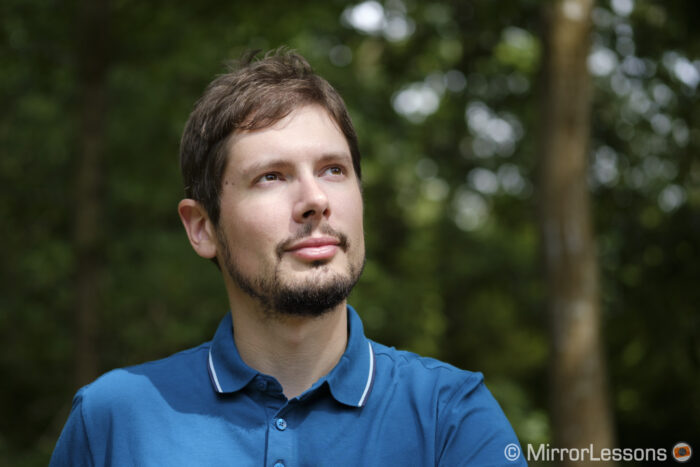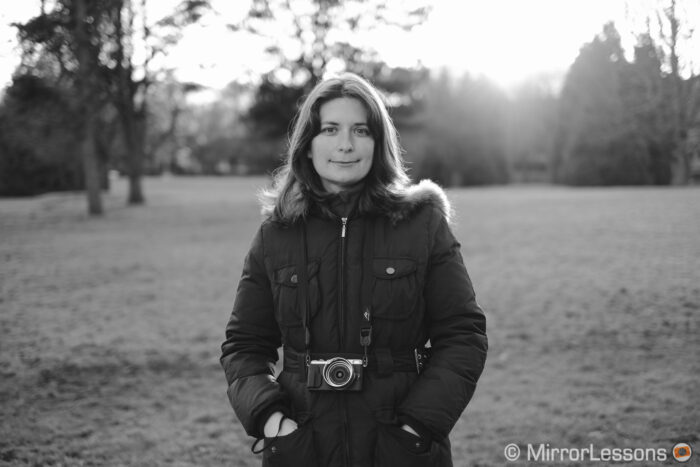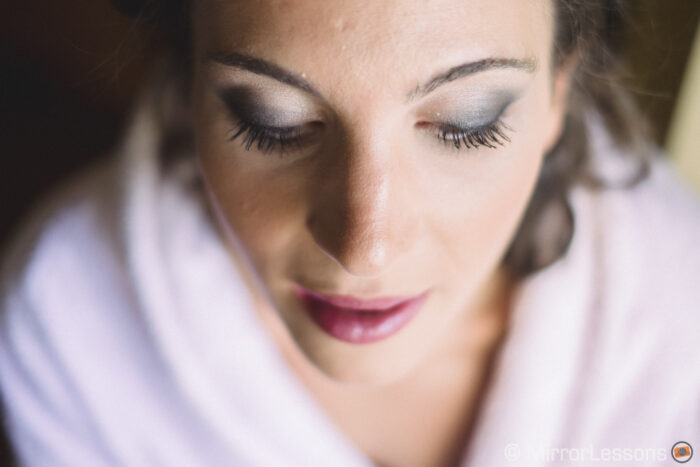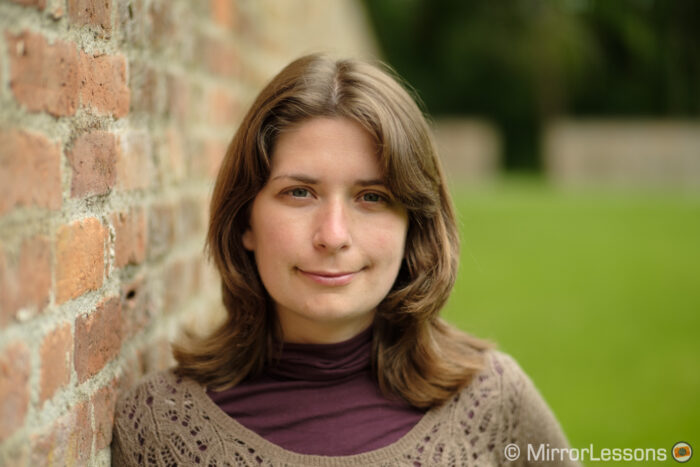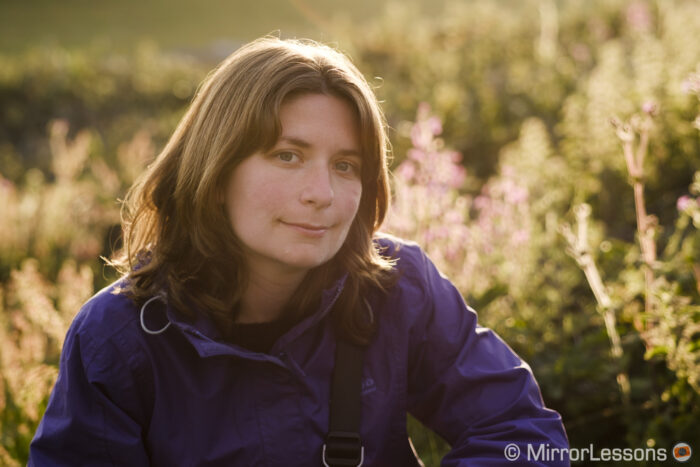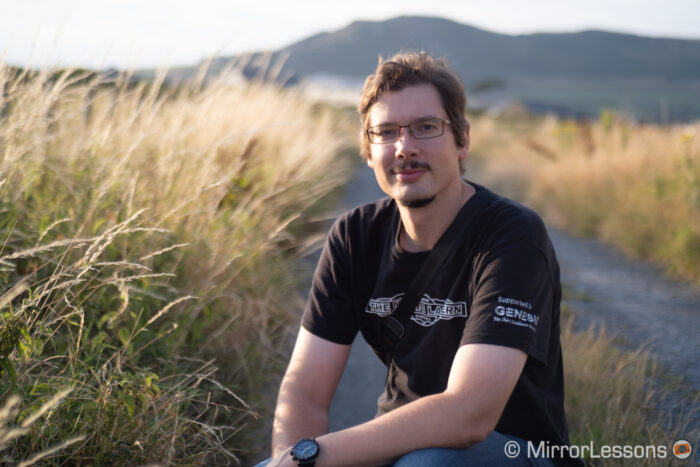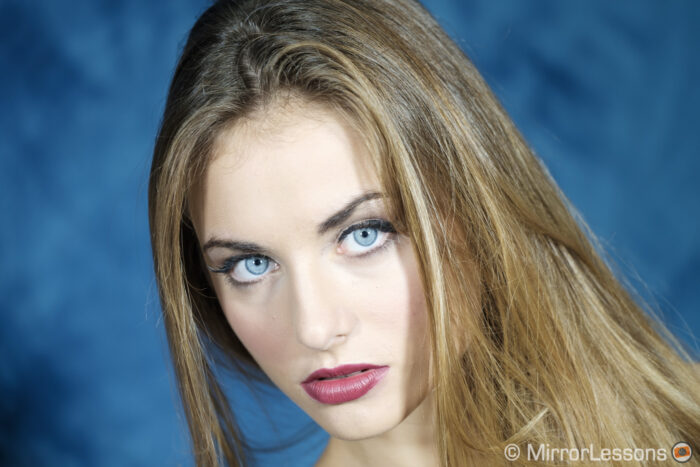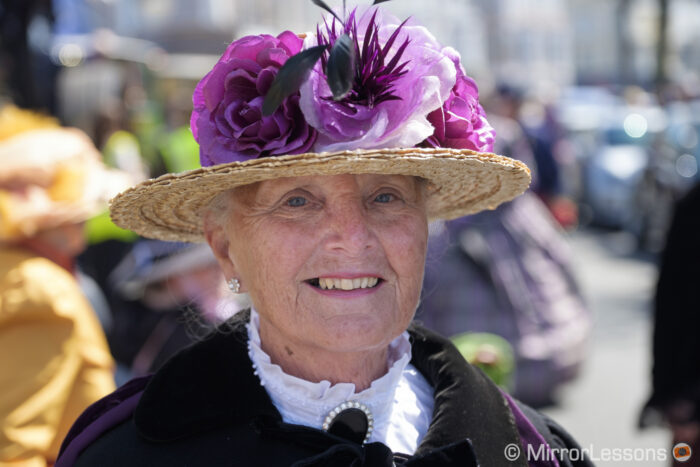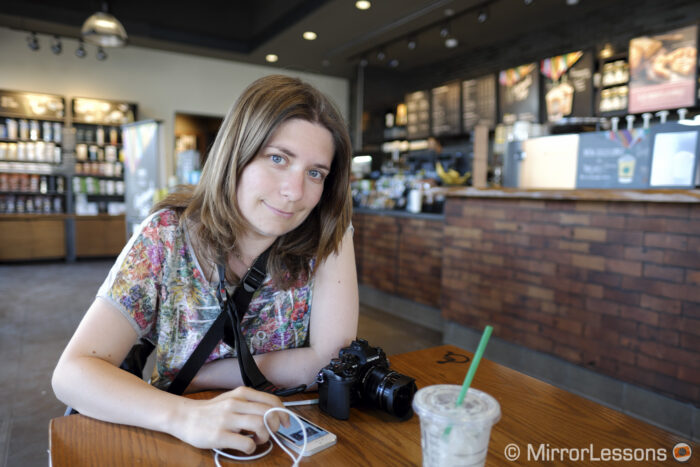The love of portrait photography is often born of the desire to take better pictures of family members and friends, but for some, this love transforms into a passion for photographing people in general.
Portraiture is one of the most popular genres in photography and can teach you a lot about composition, light, communication and how to portray a subject at his or her best. It can also be combined with other genres such as weddings, sports and events to name a few.
Whether your motivation is professional or not, the more serious you get about portraits, the sooner you will start to look for an appropriate lens for the genre.
If you own a Fujifilm X-series camera, you’re in luck because today there are several portrait options available for the system. Some are relatively cheap while others will take a larger chunk out of your wallet – and some have distinctive characteristics whereas others can be useful for multiple disciplines.
We’ve compiled this exhaustive list to present to you with all the lenses – from the most to the least obvious – and hopefully help you make the right decision.
Ethics statement: All opinions expressed in this article are our own and based on our real world experience with each lens. We were not asked to write anything about these lenses, nor were we provided with any sort of compensation. Within the article, there are affiliate links. If you decided to buy something after clicking the link, we will receive a small commission. To know more about our ethics, you can visit our full disclosure page. Thank you!
TABLE OF CONTENTS
1. Note & Updates
2. Our favourite: Fujinon XF 56mm f/1.2 R
3. The fastest: Fujinon XF 50mm f/1.0 R WR
4. The smallest: Fujinon XF 50mm f/2 R WR
5. The cheapest: Viltrox 56mm f/1.4
6. The quickest: Fujinon XF 90mm f2 R LM WR
7. The oldest: Fujinon 60mm f/2.4 R Macro
8. To keep in the bag: Fujinon XF 35mm f1.4 R
9. The fast MF alternative: Samyang 50mm f1.2 CS
10. The cheap MF alternative: 7artisans 55mm f1.4
11. Alternative choices: Zoom lenses
12. Closer and wider: other prime lenses
13. Excluded or yet to be tested lenses
Notes and abbreviations
Throughout the article you will notice some abbreviations that accompany the lens names. They refer to specific characteristics:
- Fujinon: Fujifilm’s name for all optical lenses made for the X, GF, Cine and Broadcast market
- XF: better construction (metal rather than plastic) in comparison to the XC line (most lenses are XF)
- R: aperture ring
- WR: weather resistant (usually splash, dust and freeze proof down to -10°C)
- LM: Linear Motor for a faster and quieter autofocus
- OIS: optical stabilisation
- Macro: close focus capabilities (1:2 or 1:1 magnification)
- APD: apodisation filter that enhances the bokeh rendering
- CS: Compact System for Samyang lenses designed for mirrorless cameras
Note that in this article we concentrated on lenses designed for the APS-C mirrorless system. This excludes lenses designed for the GF medium format system, as well as lenses that can be adapted.
Article Updates
- November 2020: added feedback about the 50mm f1.0 and the Viltrox 56mm 1.4
- July 2018: added feedback about the 80mm Macro in the Excluded chapter
Our Favourite: Fujinon XF 56mm f1.2 R
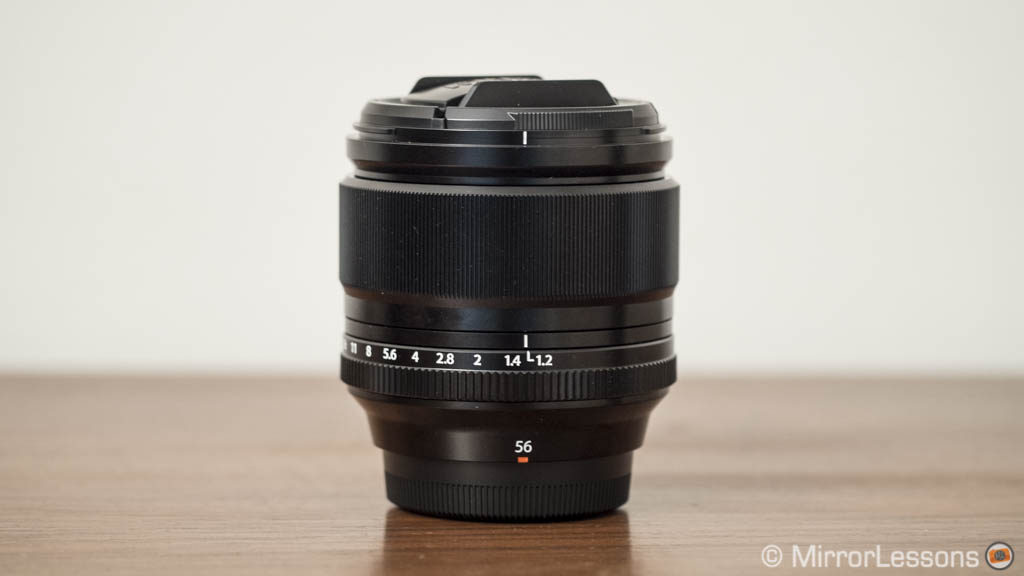
Fujifilm’s first lens designed specifically for portraits is still the company’s most popular today and it also happens to be our personal favourite. We recently compared it against three other lenses (including the 50m f1.0) and the lens still holds its own when it comes to key aspects like sharpness.
The 56mm focal length on APS-C gives you the same angle of view as an 85mm for full frame / 35mm format camera, which is one of the classic choices for portraiture.
The fast aperture of 1.2 gives you a lovely shallow depth of field with smooth transitions between in focus and out of focus areas, as well as good sharpness wide open. The bokeh is pleasant with circular discs at the centre and not too many onion rings. At the edges these circles take on a slightly oval shape because of the minor swirly effect but this also helps give the rendering of the lens a subtle yet distinctive look.
Sharpness is already excellent at the fastest aperture. Close it down to f2 and the lens becomes razor sharp, but the bokeh balls start to lose their circular shape in favour of the heptagonal form of the aperture. Contrast is good but more moderate in comparison to other lenses, which I think is a plus for portraits. There is vignetting at 1.2 and 1.4, as well as a bit of chromatic aberration, but nothing you can’t remove in post production. Ghost flares can appear in direct sunlight.
The AF motor is not the fastest in the line-up but the performance is decent. The minimum focus distance is 70cm which doesn’t allow you to get very close to your subject. The fly-by-wire focus ring can be challenging when you want to fine-tune focus manually.
The price is reasonable brand new but definitely not the cheapest. However given that the lens is one of the older options in the range, you can certainly find interesting deals second-hand.
Why choose the Fujifilm 56mm f/1.2 for portraits:
- the best Fujifilm lens in this focal length range when it comes to sharpness
- fast aperture of 1.2
- pleasant bokeh
- easy to find second hand
To consider:
- the AF motor is not the fastest
- fly by wire focus ring lacks precision
Reminder: the links below are affiliate links. If you decided to buy something after clicking the link, we will receive a small commission.
Check price of the Fujifilm 56mm f1.2 on
Amazon | Amazon UK | B&H Photo | eBay
Second-hand Fujinon lenses on
MPB US | MPB UK
The fastest: Fujinon XF 50mm f/1.0 R WR
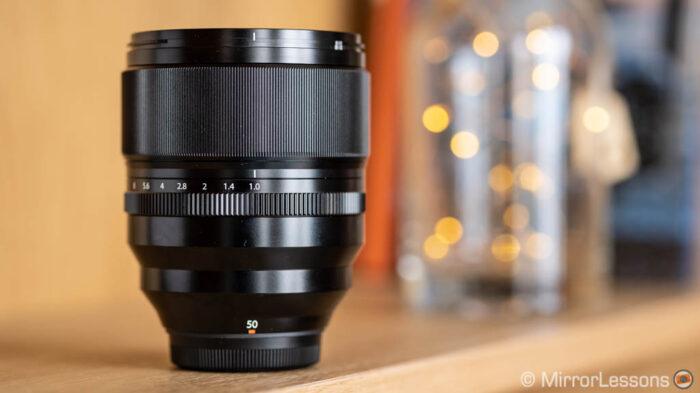
The 50mm f1.0 is the only lens with such a fast aperture and autofocus, not only for the X-mount system, but for any camera system (as of November 2020). The focal length gives you the same field of view as a 75mm lens designed for full frame cameras.
The 50mm f1.0 is the lens that will give you the shallowest depth of field, as well as the smoothest bokeh among all the lenses I’ve tested here. It has beautiful rounded out of focus circles at the centre with a smooth and plain texture, whereas at the edges you get distinctive “cat’s eye” shapes when used at the fastest aperture. The subject separation capabilities are really good when framing a half-body portrait or even a full body shot.
The lens is sharp wide open and gets razor sharp from f2. The corners are a bit weak at f1 and f1.4, but you’ll rarely have to worry about that when doing portraits at such fast apertures. There is a bit of chromatic aberration, and lots of vignetting wide open but like the 56mm, you can get rid of it easily in post.
The AF motor is good but not the fastest, which is understandbale given that there are larger lens elements to move. Also, keep in mind that the depth of field at f1.0 is very small so achieving perfect focus is not always a given.
The lens is well-built and is weather sealed, but its size and weight don’t go unnoticed. It is the most expensive lens among all those listed in this article, although I think it’s fairly priced considering its unique characteristics.
Why choose the Fujifilm 50mm f/1.0 for portraits:
- smooth and very pleasant bokeh, the best in the category
- excellent subject separation
- good sharpness wide open
- weather sealed
- expensive but fair price for what you get
To consider:
- not the fastest autofocus
- sharpness in the corners and at the minimum focus distance is a bit weak until f2
Reminder: the links below are affiliate links. If you decided to buy something after clicking the link, we will receive a small commission.
Check price of the Fujifilm XF 50mm f/1.0 R WR on:
B&H Photo | eBay
Second-hand Fujinon lenses on
MPB US | MPB UK
The smallest: Fujinon XF 50mm f/2 R WR
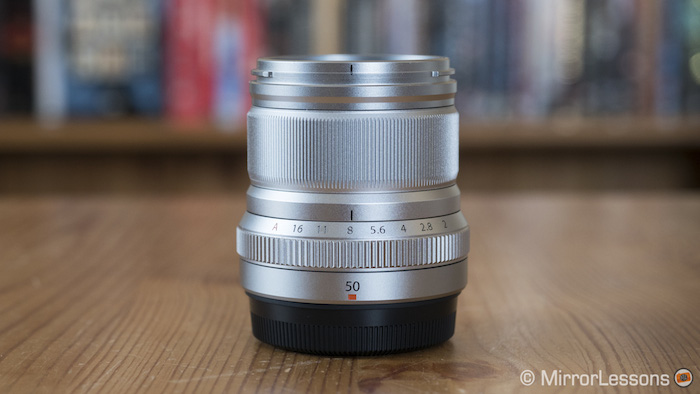
The 56mm 1.2 might be our first choice for high quality portraits, but there are plenty of things we like about the 50mm f2 as well.
The lens is small and lightweight which means it fits every interchangeable lens camera from Fujifilm perfectly. It is weather sealed and has the fastest and most silent AF motor in the 50/56mm range, which makes it great not just for portraits but occasional action and sports scenario too.
The optical performance is excellent with good sharpness at f2 and peak sharpness at f2.8. Corners are good too. Furthermore, it is the non-macro lens that focuses the closest (39cm) and offers the best sharpness at the minimum focus distance.
The out of focus areas are pleasant when focusing close but when the subject is more distant, the narrower depth of field reveals a bokeh with a more nervous character in comparison to the other lenses mentioned above. Still, considering the slower aperture and lower price, it defends itself well.
Vignetting, distortion and chromatic aberration are well controlled. There is a bit of ghost flare but nothing to worry too much about.
Why choose the Fujifilm 50mm f/2 for portraits:
- compact, light and weather sealed
- good sharpness
- quick and silent AF motor
- competitive price
To consider:
- the f2 aperture might be not enough for those seeking the shallowest depth of field possible
Reminder: the links below are affiliate links. If you decided to buy something after clicking the link, we will receive a small commission.
Check price of the Fujifilm XF 50mm f/2.0 R WR on:
Amazon UK | B&H Photo | eBay
Second-hand Fujinon lenses on
MPB US | MPB UK
The cheapest: Viltrox 56mm f1.4
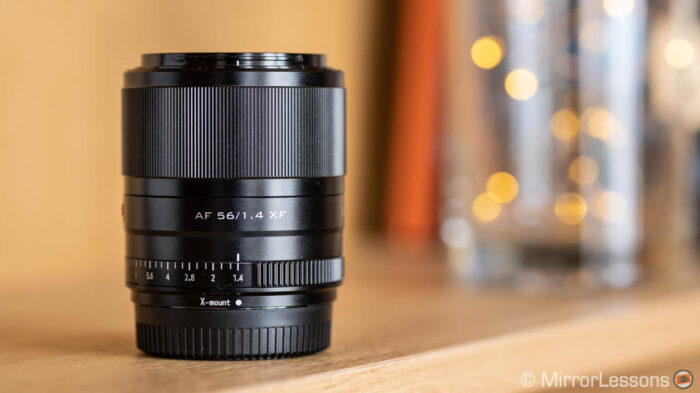
The Viltrox 56mm is a lens that surprised me. I wasn’t expecting anything from it, and it turned out to be an interesting choice for those on a budget.
The fast aperture of f1.4 is attractive and offers decent sharpness, but keep in mind that the lens is at its best from f2 (and peaks at f2.8). Corners are weak until f2.8.
The bokeh rendering is satisfying but not as smooth as the 50mm f1 or 56mm f1.2. The bokeh balls at 1.4 have a plain texture without too many onion rings, but their shape is not perfectly rounded.
There is chromatic aberration at f1.4 that you’ll have to get rid of it in post, as well as barrel distortion. Vignetting is well contained however and the flare resistance is on par with the Fujifilm lenses.
Where the lens surprised me the most is the autofocus speed. Given that it is designed around reverse engineering, I wasn’t expecting it to be almost as fast as the 50mm f2. The Viltrox team has done a good job here.
The lens has a solid metal built (but is not weather sealed) and has a click-less aperture ring. The latter is a curious choice because when changing the f value with the camera turned on, you clearly see the 1/3 steps in the live view. Furthermore, the exposure is not affected if you try to fine-tune it in between 1/3 steps. So despite not having the mechanical click, the ring behaves like a clicking one.
Why choose the Viltrox 56mm f/1.4 for portraits:
- compact
- excellent AF performance
- lowest price with autofocus and fast aperture
- decent sharpness at f1.4 (but it gets better from f2)
To consider:
- lots of chromatic aberration at the widest aperture
- barrel distortion
- click-less aperture ring without smooth transitions between the 1/3Ev steps
Reminder: the links below are affiliate links. If you decided to buy something after clicking the link, we will receive a small commission.
Check price of the Viltrox 56mm f/1.4 on:
Amazon | Amazon UK | B&H Photo | eBay
Second-hand Fujinon lenses on
MPB US | MPB UK
The quickest: Fujinon XF 90mm f2 R LM WR
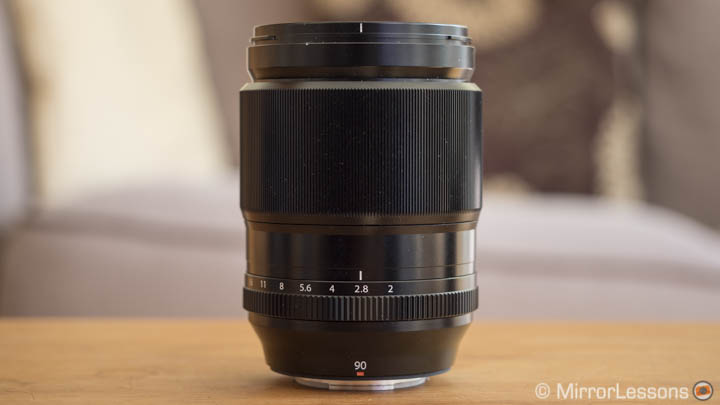
The 90mm is one of those lenses you either love or hate. Its angle of view (137mm equivalent) can be too narrow for portraits if you don’t have enough space to move about, unless of course you only concentrate on headshots. However that longer reach, coupled with some of its distinctive characteristics, makes it more versatile than you might think.
The 90mm is larger and heavier than most primes mentioned in the article but it doesn’t unbalance small cameras like the X-T30 too much. Detail rendering is already excellent at f2 and the lens has more contrast in comparison to the 56mm. The bokeh is pleasant and uniform, with the bokeh balls only losing their circular shape from f4. Vignetting, CA and flare are all well-controlled unsurprisingly.
The lens features one of the most advanced AF mechanisms in the line-up. It has a quad linear motor, which means it is an excellent companion for action shots. It has a medium telephoto reach so it won’t always be long enough but it can work for some sports and street events very well. If you like to get close up, the magnification capabilities are better than the lenses mentioned above. You also get a weather sealed construction.
It’s the most expensive portrait lens in the line-up but only marginally more expensive than the 56mm. Although I labeled the latter as my favourite for portraits, I admit that the versatility of the 90mm is very appealing.
Why choose the Fujinon 90mm f2:
- excellent sharpness and bokeh
- good close focus capabilities
- super fast AF motor
- weather sealed
- useful for more than just portraits
To consider:
- on the expensive side
- the field of view can be narrow if you work in small spaces
Reminder: the links below are affiliate links. If you decided to buy something after clicking the link, we will receive a small commission.
Check price of the Fujifilm 90mm f2 on
Amazon | Amazon UK | B&H Photo | eBay
Second-hand Fujinon lenses on
MPB US | MPB UK
The oldest: Fujinon 60mm f/2.4 R Macro
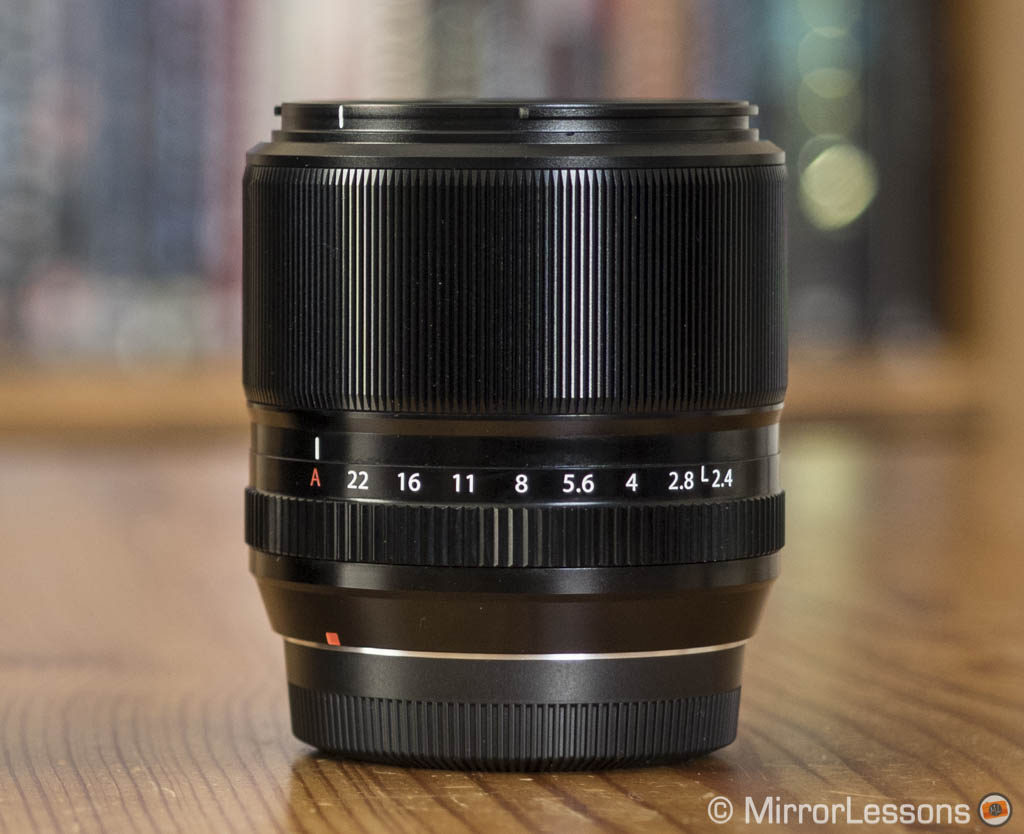
Technically the 60mm has been designed for macro work more than portraits. It was a viable option at the beginning when the lens selection was poor (the 60mm is one of the first three lenses released for the X system). Now that choice has increased, there are fewer reasons to choose this older lens since it is more expensive and has a slower AF motor. That being said, I believe it is still worth mentioning for a couple of reasons.
The optical quality is stunning and it holds up very well against the 50mm f2 and 56mm 1.2. Sharpness is spot on and the bokeh isn’t dissimilar from the other contenders. Being a macro lens, there may be a little too much sharpness and contrast for those who like a smoother rendering but a few tweaks in post production should be enough to solve this. For those who like to capture fine details however, it becomes an excellent choice.
The lens is one of the cheapest options if you look at the second hand market. What’s more, if you are interested in semi-macro work (1:2 ratio) (e.g. capturing the eye of your subject or other interesting details on the face) it becomes the optimal choice on the list. You have to cope with a slower and louder AF mechanism but for static shots, it shouldn’t be too much of a problem. There can be a little bit of chromatic aberration at the fastest aperture but nothing you can’t get rid of in post production.
Why choose the Fujinon 60mm f/2.4:
- stunning sharpness
- excellent bokeh quality
- it is one of the most affordable lenses on the second-hand market
To consider:
- definitely the slowest AF motor
- worth buying if you find it at a low price and like close-ups
Reminder: the links below are affiliate links. If you decided to buy something after clicking the link, we will receive a small commission.
Check price of the Fujifilm 60mm f2.4 on
Amazon | Amazon UK | B&H Photo | eBay
Second-hand Fujinon lenses on
MPB US | MPB UK
To keep in your bag: Fujinon XF 35mm f1.4 R
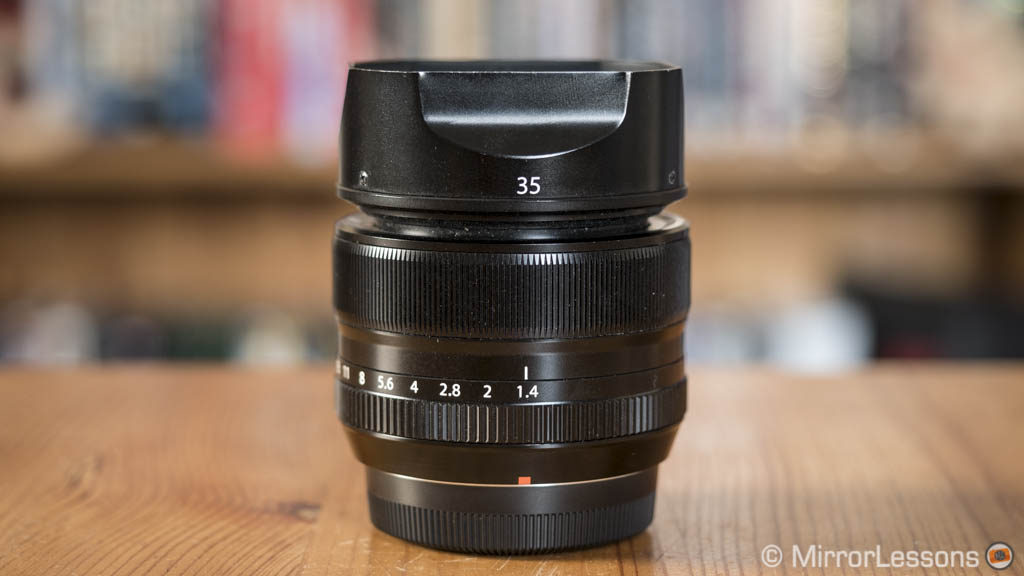
The 35mm is one of the lenses I’ve used the most in the X series and on many occasions, it served as a great portrait alternative. It’s not a portrait lens by definition but its versatile field of view (53mm equivalent) makes it an excellent second choice to keep in your bag. I would go even further and say that if you are hesitating between a fast multi-purpose prime and a portrait lens, the versatile 35mm might make more sense to begin with.
Despite its age (like the 60mm macro, it was among the first lenses to be released for the system), the combination of sharpness, a fast aperture and an attractive bokeh makes this lens an excellent tool for environmental portraits. Detail rendering is good at 1.4 and the lens reaches its peak at f2.8. The bokeh is pleasant and while not perfectly uniform at the edges, gives the image a distinctive look. Subject separation is more than satisfactory at the fastest apertures with a natural and gradual transition to the out of focus areas.
Being an old lens, the AF motor isn’t the fastest nor the quietest but I find the performance more than acceptable on cameras with phase detection AF (especially the 24MP/26MP generations). Bear in mind that there is no weather sealing, the aperture ring moves a little too freely and the fly by wire focus ring is not the most precise in operation. It is not cheap but you can easily find it second hand like I did two years ago.
The shorter focal length of the 35mm can present some limitations if you are interested in headshots or close-ups as it can emphasise distortion on the person’s face and make the image less flattering. However with the right angle, composition and light, you can get nice results at short focus distances. Plus in some situations, the shorter focal length can help you get the shot if you are in a claustrophobic environment such as a bathroom where the bride is getting ready for example.
It still have this lens today, and it is always the first I mount to any new Fujifilm camera that I test. It deserves a mark II version to fix all its quirks.
Why choose the Fujinon 35mm f/1.4:
- excellent sharpness from 1.4
- pleasant bokeh and good subject separation
- versatile “standard” focal length
- affordable on the second hand market
To consider:
- slow AF motor
- freely moving aperture ring
Reminder: the links below are affiliate links. If you decided to buy something after clicking the link, we will receive a small commission.
Check price of the Fujinon 35mm f1.4 on
Amazon | Amazon UK | B&H Photo | eBay
Second-hand Fujinon lenses on
MPB US | MPB UK
The fast MF alternative: Samyang 50mm f1.2 CS
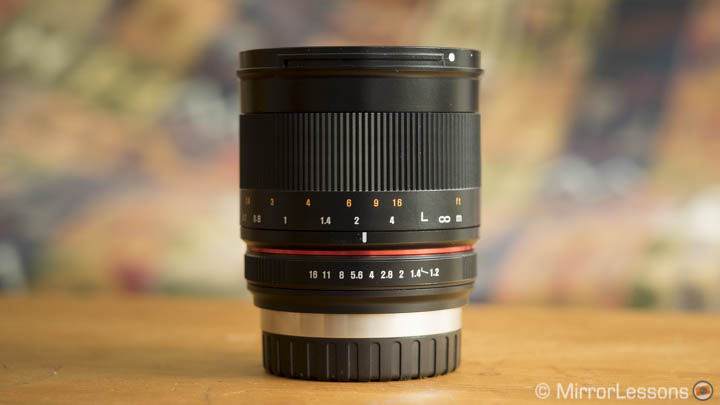
I’ll be 100% honest with you and say that this lens is not my favourite. Yes, it has an attractive price and a fast aperture like the 56mm but I find the lack of sharpness up to f2 disappointing. That being said, it is also the only cheap alternative to the 56mm if you want that f1.2 shallow look, so it is fair to include it on the main list.
Let’s start with its strengths: you get a nice mechanical focus ring that is precise to use. The bokeh gives you a distinctive swirly effect with cat’s eye shapes at f1.2 but becomes more uniform from f1.4. The rounded out of focus circles have lots of onion rings but flare and CA are well controlled.
Concerning sharpness, the performance is not bad at a close focus distance, which means up to a headshot size. As soon as you get further away though, sharpness can be disappointing up to f2, with the peak performance being found at f5.6. Corners are consistently worse than the centre and while they might not count for portraits, it means that the lens isn’t really usable for other things like landscapes.
Vignetting is strong at the fastest apertures. Obviously there isn’t an AF motor or electronic contacts which means no EXIF data communication with the camera.
Why choose the Samyang 50mm f/1.2 CS:
- decent sharpness at short focus distances
- uniform bokeh rendering from f1.4 (it’s swirly at f1.2 if you like this type of effect)
- precise mechanical focus ring
- attractive price
To consider:
- sharpness decreases a lot as soon as you move away from your subject
- manual focus only
Reminder: the links below are affiliate links. If you decided to buy something after clicking the link, we will receive a small commission.
Check price of the Samyang 50mm f1.2 on
Amazon | Amazon UK | B&H Photo | eBay
Second-hand Fujinon lenses on
MPB US | MPB UK
The cheap MF alternative: 7artisans 55mm f1.4
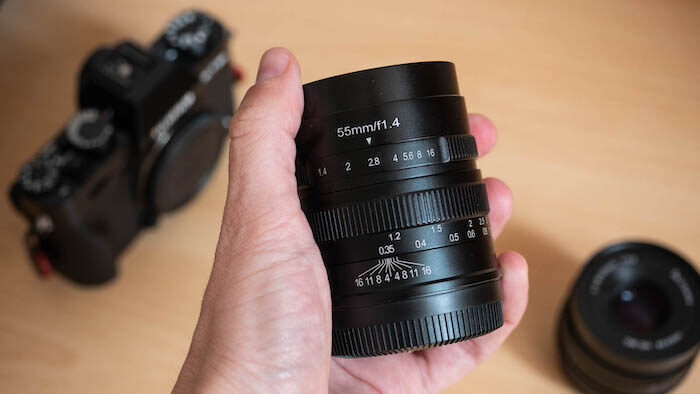
The 7artisans 5mm f1.4 doesn’t have the best sharpness nor the most attractive bokeh. In fact the most particular of you might be disappointed by the performance. However when you realise this lens costs around 100 bucks, it becomes easier to accept the compromises.
In fact, we could be even more forgiving and say that it has decent sharpness, a satisfying bokeh and good close focusing capabilities for the price. The lens is tiny, the build quality is not bad and it features a metal finish. You get a mechanical focus ring and click-less aperture ring. Like the Samyang, there are no electronic contacts.
Why choose the 7atisans 55mm f1.4:
- it has the lowest price you can find
To consider:
- don’t expect outstanding optical quality, but it does well for what it costs
Reminder: the links below are affiliate links. If you decided to buy something after clicking the link, we will receive a small commission.
Check price of the 7artisans 55mm f1.4 on
Amazon |B&H Photo | eBay
Alternative choices: Zoom lenses
If you are just interested in portraits, I believe that a prime lens is much more interesting to use with the Fuji X system. However if you are looking for a multi-purpose solution and want to know how zooms perform for portraits, here are my two cents concerning the most interesting selection in the XF catalogue.
Fujinon 50-140mm f2.8 R LM OIS WR
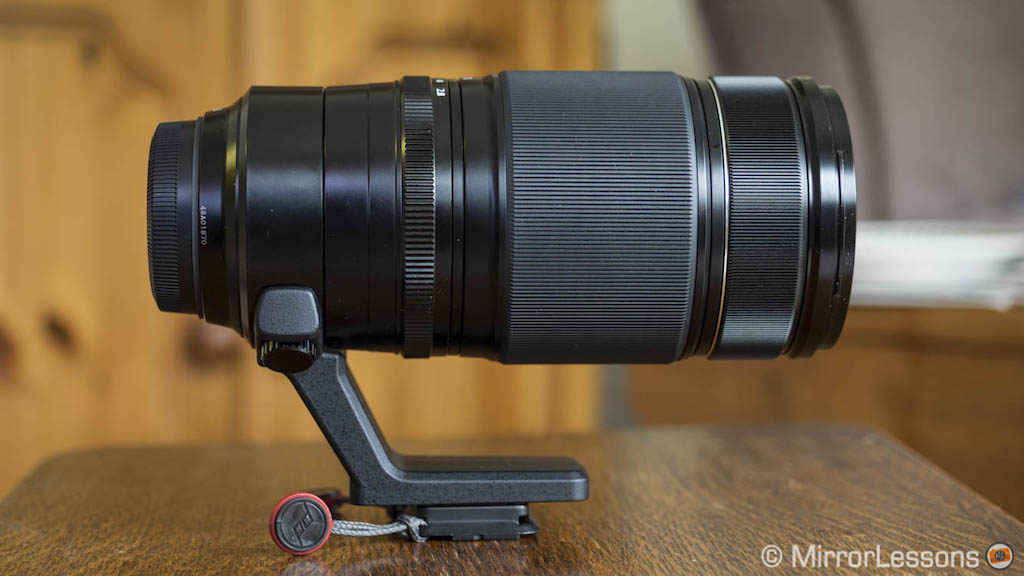
The 50-140mm is your classic 70-200mm equivalent lens and is the workhorse of many pro photographers. The 2.8 aperture and long focal length are enough to isolate your subject from the background to create nice portrait shots.
Sharpness is excellent and the lens has a short minimum focus distance. It can also serve well for studio work. The bokeh is good but not my favourite as I find it less attractive than some other lenses. The AF motor is really fast and unlike the prime lenses, you can benefit from excellent optical stabilisation.
Reminder: the links below are affiliate links. If you decided to buy something after clicking the link, we will receive a small commission.
Fujinon 50-140mm f2.8 on
Amazon | Amazon UK | B&H Photo | eBay
Second-hand Fujinon lenses on
MPB US | MPB UK
Fujinon 16-55mm f2.8 R LM WR
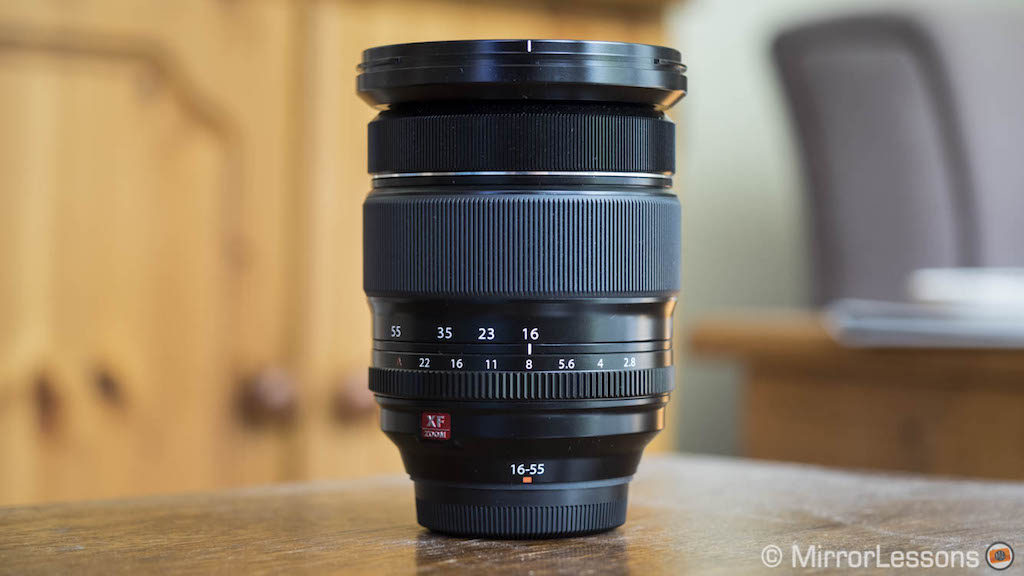
The 16-55mm is a quality solution for event work or travel if you don’t like changing lenses. At the risk of sounding repetitive, sharpness is excellent and the bokeh is pleasant at f2.8. If you want enough shallow depth of field, you need to stay at 55mm and focus close which will give you nice headshots. For anything more than an upper body shot, subject separation is more limited. The AF motor is fast and the lens is weather sealed but it is not compact.
Reminder: the links below are affiliate links. If you decided to buy something after clicking the link, we will receive a small commission.
Fujinon 16-55mm f2.8 on
Amazon | Amazon UK | B&H Photo | eBay
Second-hand Fujinon lenses on
MPB US | MPB UK
Closer and wider: other prime lenses
If we want to consider portraits outside of the canonical mid-telephoto field of view, then we can expand the selection to other prime lenses. I already mentioned the 35mm f1.4 but it is not the only one.
Shorter focal lengths with a fast aperture can give you enough subject separation while including more of the person’s body and the environment surrounding him or her. However keep in mind that the closer you get, the more you can distort the person’s face, creating a less flattering look.
Fujinon XF 16mm f1.4 R WR
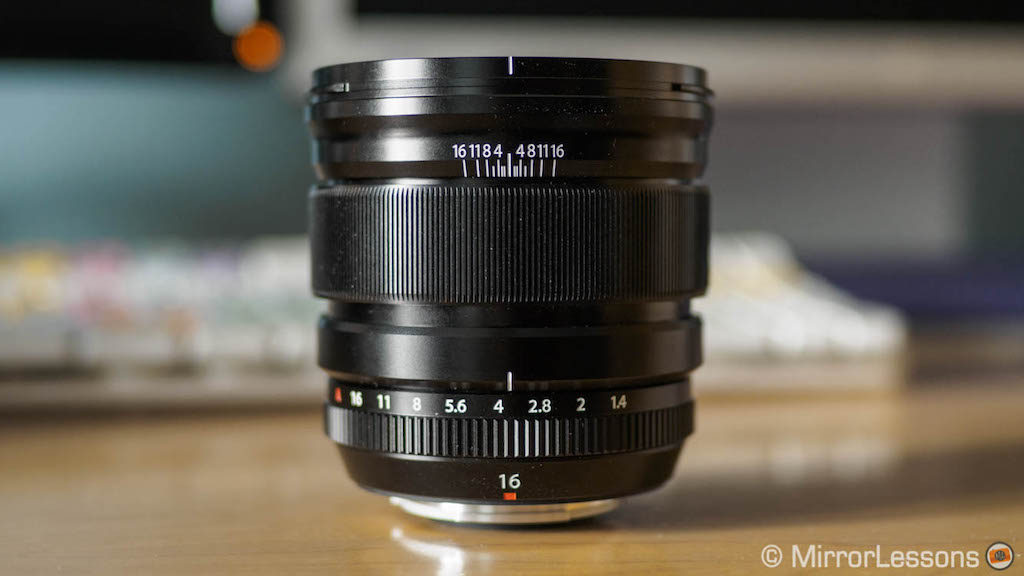
Despite its wide angle of view, this lens surprised me with its bokeh and subject separation capabilities. If you are careful with the composition, it can give you an interesting tridimensional result. Sharpness is good from f1.4, and vignetting, flare and barrel distortion are well-contained. The AF motor is fast and silent. It’s definitely not an easy lens to use for portraits but it can give you a unique perspective. The only fly in the ointment is its price.
Reminder: the links below are affiliate links. If you decided to buy something after clicking the link, we will receive a small commission.
Fujinon XF 16mm f1.4 on
Amazon | Amazon UK | B&H Photo | eBay
Second-hand Fujinon lenses on
MPB US | MPB UK
Fujinon XF 23mm f1.4 R
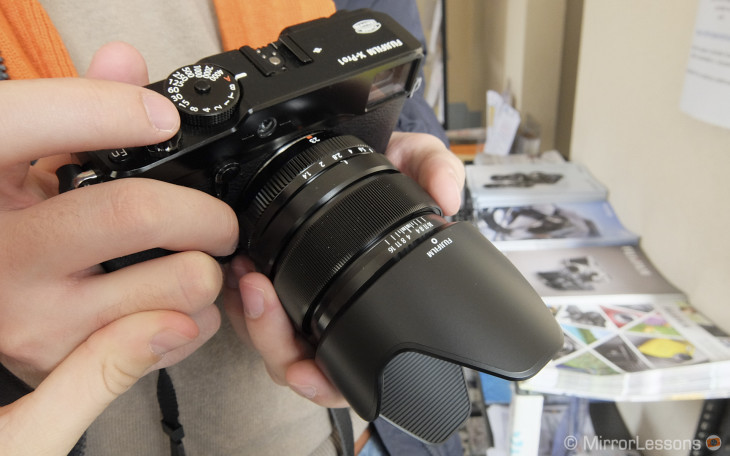
Much like the 16mm, the 23mm can be an interesting solution for environmental portrait work. The optical quality is close to that of the 16mm with excellent sharpness from 1.4, good subject separation and a lovely bokeh. It doesn’t have a super fast AF motor and is on the expensive side, but you can find it second-hand more easily.
Reminder: the links below are affiliate links. If you decided to buy something after clicking the link, we will receive a small commission.
Fujinon XF 23mm f1.4 on
Amazon | Amazon UK | B&H Photo | eBay
Second-hand Fujinon lenses on
MPB US | MPB UK
Excluded or yet to be tested lenses
There are other lenses available for the Fuji X-mount that can suit portrait work. We excluded them from the main list, either because we haven’t tested them yet or because in our opinion, they aren’t worth the investment.
- Fujinon 56mm f1.2 R APD: this version includes a special apodisation filter to enhance the bokeh rendering but you lose one stop of light and phase detection AF. The price is also higher. It’s a very specialised lens but the differences between it and the normal 56mm are too subtle in my opinion. You can read more about how the two 56mm lenses compare in our dedicated article.
- Fujinon 80mm f2.8 R LM WR OIS Macro: the 80mm renders impressive sharpness as expected from such a specialist lens, but doesn’t come close to the creamy, ethereal look you want from a portrait lens. Given its size, weight, price and true macro identity (1:1 magnification), I don’t see a reason to recommend it in this case.
- Zeiss Touit 50mm f2.8 Macro: primarily a macro lens (1:1 magnification), it does a decent job for portraits but now that the 50mm f2 is out, there is little sense in listing this lens as an option given its high price and slow AF motor.
- Viltrox 23mm 1.4 and 33mm 1.4: autofocus lenses with an affordable price just like the 56mm 1.4 that we tested. If the 56mm is anything to go by, they should be an interesting choice. There is also an 85mm 1.8.
- Tokina 23mm 1.4 and 33mm 1.4: from what I understand, these are the same as the Viltrox lenses but with a faster AF motor. Tokina has also licensed the X-mount protocol from Fujifilm unlike Vitrox that does reverse engineering. A 56mm 1.4 is also in the cards.
- Samyang 35mm f1.2 CS: the fast aperture makes it an interesting competitor for the XF 35mm 1.4. It’s manual focus but we haven’t had the chance to test it yet.
- Mitakon Speedmaster 35mm f0.95 II: made by the Chinese company Zhong YI Optics, it offers an attractive aperture of 0.95 and a reasonable price of $600. It is manual focus but it too has yet to stop at our office.
- Handevision Ibelux 40mm f0.85: this is a lens that we had the chance to test briefly at Photokina in 2014, but we weren’t too impressed by the performance and it is really heavy. The price is high and it doesn’t seem worth the effort just to get that 0.85 aperture.
- Handevision Iberit 50mm f2.4 and 90mm f2.4: manual focus lenses designed for the full frame format (Leica M), they are also available for the Fuji X-mount, giving you an equivalent focal length of 75mm and 137mm respectively. The 50mm costs more than $500 so you’d be better off with the XF 50mm f2. The 90mm can be an interesting alternative to the XF 90mm if you like this field of view, and it is less expensive than the 50mm. We don’t know how they perform however.
- Lensbaby Velvet 85mm f1.8: this is probably not the answer if you are looking for sharp results, but Lensbaby products do have that soft “dreamy” look that can attract some customers.
- Other Samyang optics: the Korean brand sells many of its DSLR prime lenses with an X-mount as well so you can attach lenses such as the 85mm 1.4 or 135mm f2 directly to your camera. They can be quite large and heavy however and they are manual focus only once again.
You may also enjoy reading/watching the following comparisons:
- Fuji 50mm f1 vs 56mm f1.2 vs 50mm f2 vs Viltrox 56mm f1.4
- Fujinon XF 56mm f1.2 vs 50mm f2 vs 60mm f2.4
- Fujinon XF 56mm f1.2 vs Samyang 50mm f1.2
- Fujinon XF 56mm f1.2 vs 90mm f2
- Fujinon XF 56mm f1.2 vs 56mm APD f1.2
- Fujinon XF 80mm f2.8 Macro vs 90mm f2

